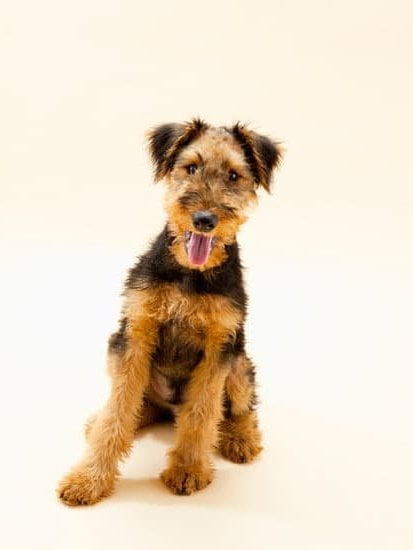Are you a new dog owner wondering how to train your dog to use the bathroom outside? Potty training is an essential part of owning a dog, and it’s important to get it right. In this article, we’ll provide you with a comprehensive guide on how to successfully potty train your furry friend. From understanding the importance of potty training to dealing with accidents and troubleshooting common challenges, we’ve got you covered.
Potty training is crucial for both your dog’s well-being and the cleanliness of your home. By teaching your dog to use the bathroom outside, you’re not only preventing indoor accidents but also promoting good hygiene practices. It’s essential to establish a consistent routine and use positive reinforcement techniques for successful potty training.
Starting the potty training process at the right time is key for success. We’ll discuss how to determine when your dog is ready for potty training and provide tips on creating a consistent routine for potty breaks. Understanding your dog’s bathroom behavior and signals is also crucial in facilitating successful potty training, which we’ll cover in this article.
Dealing with accidents and being patient throughout the training process are common challenges that we’ll address as well. Whether it’s raining or snowing outside, we’ll also share tips for successful potty training in different weather conditions.
Choosing the Right Timing to Start Potty Training
Understanding Your Dog’s Development
Before starting the potty training process, it is essential to understand your dog’s development. Puppies have smaller bladders and less control over their bathroom habits, so they may need more frequent potty breaks compared to adult dogs. It’s also important to consider any health issues that may affect your dog’s ability to control their bladder and bowel movements.
Signs of Readiness
One key factor in choosing the right timing for potty training is recognizing the signs of readiness in your dog. These signs may include sniffing around, circling, or heading to the door when they need to go outside. If you notice these behaviors, it may be a good time to start potty training.
Environmental Considerations
When selecting the right timing for potty training, consider the season and weather conditions. It may be easier to start potty training during milder weather when it’s more comfortable for both you and your dog to spend time outside. Additionally, if you live in an apartment or high-rise building, factor in the time it takes to get outside for bathroom breaks. Timing will vary depending on these environmental factors.
By understanding your dog’s development, recognizing signs of readiness, and considering environmental factors, you can choose the right timing to start potty training your dog to use the bathroom outside. This will set a strong foundation for successful potty training and minimize accidents in the long run.
Creating a Consistent Routine for Potty Breaks
Establishing a Schedule
Creating a consistent routine for potty breaks is essential when it comes to successfully training your dog to use the bathroom outside. Dogs thrive on routine, so establishing a set schedule for potty breaks can help them understand when and where they are supposed to go.
Start by taking your dog outside first thing in the morning, after meals, before bedtime, and at regular intervals throughout the day. By sticking to a schedule, you can help your dog learn to hold their bladder and recognize when it’s time to go outside.
Using Verbal Cues
In addition to establishing a schedule, using verbal cues can also play a crucial role in creating a consistent routine for potty breaks. Choose a specific phrase such as “go potty” or “do your business” and use it every time you take your dog outside to eliminate. Over time, your dog will begin to associate this phrase with the act of going to the bathroom, making it easier for them to understand what is expected of them.
Monitoring Your Dog’s Behavior
Understanding your dog’s bathroom behavior and signals is also important in creating a consistent routine for potty breaks. Keep an eye out for signs that your dog needs to go outside such as sniffing around, circling, or pacing. By learning to recognize these behaviors, you can proactively take your dog outside before accidents occur indoors.
Pay attention to any patterns in your dog’s behavior so that you can anticipate when they need to go out even before they display obvious cues. By being proactive and consistent with their potty breaks, you can effectively train your dog to use the bathroom outside.
Using Positive Reinforcement Techniques for Successful Potty Training
When it comes to potty training your dog to use the bathroom outside, positive reinforcement techniques can be incredibly effective. Positive reinforcement involves rewarding your dog for good behavior, in this case, for using the bathroom in the designated outdoor area. This approach not only helps your dog understand what is expected of them but also makes the training process more enjoyable for both you and your furry companion.
One of the most important aspects of using positive reinforcement for potty training is consistency. Every time your dog successfully goes to the bathroom outside, make sure to praise them enthusiastically and give them a treat as a reward.
It’s essential to offer the reward immediately after they finish their business so that they can associate it with using the bathroom outside. Over time, your dog will learn that going outside earns them praise and rewards, making them more likely to repeat this behavior.
In addition to treats and praise, you can also use other forms of positive reinforcement such as playtime or a short walk as a reward for successful potty breaks. By associating these enjoyable activities with using the bathroom outside, your dog will be motivated to continue this behavior.
Remember to be patient and consistent in your training approach, as every dog learns at their own pace. With dedication and the right positive reinforcement techniques, you can successfully train your dog to use the bathroom outside.
Understanding Your Dog’s Bathroom Behavior and Signals
When it comes to potty training your dog to use the bathroom outside, it’s important to understand their bathroom behavior and signals. Dogs often exhibit certain behaviors or signals that indicate they need to eliminate, and being able to recognize these cues can greatly aid in successful potty training.
Here are some common bathroom behaviors and signals that dogs may display:
- Sniffing the ground or walking in circles: This is a common signal that your dog needs to go potty. If you notice your dog sniffing the ground or walking in circles, it’s best to take them outside immediately.
- Whining or barking at the door: Some dogs may vocalize their need to go outside by whining or barking at the door. Pay attention to these cues and take your dog out as soon as possible.
- Restlessness or pacing: If you notice your dog behaving restlessly or pacing around the house, it could be a sign that they need to relieve themselves.
Understanding these behaviors and signals is crucial in successfully training your dog to use the bathroom outside. By paying attention to your dog’s cues and responding promptly, you can help reinforce the behavior of going potty outside.
It’s also important to note that every dog is different, so it may take some time to learn and recognize your own dog’s specific signals for needing to use the bathroom. Be patient and observant as you work on training your furry friend.
Dealing With Accidents and Patience in the Training Process
When it comes to potty training your dog, accidents are bound to happen. It’s important to remember that patience is key during this process. Your dog is learning a new behavior, and it will take time for them to fully understand what is expected of them. Here are some tips for dealing with accidents and maintaining patience during the training process:
- Stay calm: When accidents occur, it’s important to remain calm. Avoid scolding or punishing your dog, as this can create fear and anxiety around potty training.
- Clean up accidents promptly: When accidents happen indoors, it’s essential to clean up the mess thoroughly. Use an enzymatic cleaner specifically designed for pet accidents to eliminate any lingering odors that may encourage your dog to continue using the same spot.
- Adjust your routine if needed: If you find that your dog is having frequent accidents, consider adjusting your potty break schedule. Your dog may need more frequent opportunities to go outside, especially during the early stages of training.
Remember that potty training takes time and consistency, so be patient with your dog as they learn how to use the bathroom outside. Celebrate their successes and remain positive throughout the training process. With time and dedication, your dog will eventually understand what is expected of them when it comes to using the bathroom outdoors.
Tips for Successful Potty Training in Different Weather Conditions
Training your dog to use the bathroom outside is an essential part of their overall potty training process. However, weather conditions can pose a challenge when it comes to consistent outdoor bathroom breaks. Understanding how to navigate different weather conditions can make the potty training process more successful for both you and your furry friend.
In warmer weather, it’s important to ensure that your dog stays hydrated during outdoor potty breaks. Dehydration can lead to health issues for your dog, so be mindful of providing water and shade during hot days. Additionally, be on the lookout for hot pavement or surfaces that could potentially burn your dog’s paws. Opt for grassy areas or walkways in the shade when taking your dog outside during hot weather.
On the other hand, colder weather may require some additional preparation for outdoor bathroom breaks. Consider investing in a warm and waterproof coat for your dog, especially if they have short fur. This will help keep them comfortable and protected from the elements during their potty breaks. It’s also important to regularly check their paw pads for any signs of irritation from walking on snow or icy surfaces.
Finally, rainy weather can also present challenges for outdoor potty training. Some dogs may not be comfortable getting wet while doing their business. In such cases, consider creating a covered area in your yard where your dog can go to relieve themselves without getting soaked. This could be a covered porch area or a designated spot with a canopy or umbrella.
Overall, being mindful of different weather conditions and making small adjustments accordingly can greatly contribute to successful potty training outdoors.
| Weather Condition | Considerations |
|---|---|
| Hot Weather | Provide water and shade, watch out for hot surfaces |
| Cold Weather | Invest in a warm coat, protect paw pads from snow and ice |
| Rainy Weather | Create a covered area for bathroom breaks to avoid getting wet |
Troubleshooting Common Potty Training Challenges
When it comes to potty training your dog, there are bound to be some challenges along the way. One common issue that dog owners face is when their pets refuse to eliminate outside, even after consistent training. If you find yourself in this situation, it’s important to evaluate the possible reasons behind this behavior. It could be a lack of proper reinforcement, fear of the outdoors, or simply confusion about where they are allowed to go.
Another common challenge is dealing with regressions in potty training. Your dog may have been doing well with using the bathroom outside, but then suddenly starts having accidents indoors again. This can be frustrating, but it’s essential to remain patient and continue reinforcing the desired behavior. Understanding that regressions are normal and re-dedicating yourself to the training process can help overcome this setback.
Additionally, some dogs may exhibit specific behaviors or signals that make potty training more difficult. For example, some dogs may not provide clear cues when they need to go outside. In these cases, it’s crucial for pet owners to pay close attention to their dog’s body language and behavior to pick up on any subtle signs that indicate they need a potty break.
| Common Potty Training Challenges | Troubleshooting Tips |
|---|---|
| Refusal to eliminate outside | Evaluate possible reasons behind behavior; provide positive reinforcement; address fear or confusion. |
| Regressions in potty training | Remain patient; re-dedicate yourself to the training process; reinforce desired behavior consistently. |
| Lack of clear cues from the dog | Pay close attention to body language and behavior; look for subtle signs indicating the need for a potty break. |
Additional Resources and Tools for Successful Potty Training
In conclusion, potty training your dog to use the bathroom outside requires patience, consistency, and understanding of your pet’s behavior. By following the tips and techniques outlined in this article, you can successfully train your dog to do their business outside and avoid accidents inside the house.
One of the most important aspects of potty training is understanding the importance of consistency and positive reinforcement. By creating a consistent routine for potty breaks and using positive reinforcement techniques, you can effectively communicate with your dog and encourage them to go outside.
It’s also crucial to pay attention to your dog’s bathroom behavior and signals. By understanding when your dog needs to go, you can prevent accidents from happening inside the house. Additionally, being patient with your pet and dealing with accidents calmly will help create a positive learning environment for successful potty training.
With the right resources and tools, such as training pads, treats, and proper cleaning supplies, you can set your furry friend up for success in learning how to use the bathroom outside. Whether you’re dealing with different weather conditions or common potty training challenges, there are various resources available to support you in this process. With dedication and practice, you’ll soon have a well-trained pup who knows exactly where they should be doing their business – outside.

Welcome to the blog! I am a professional dog trainer and have been working with dogs for many years. In this blog, I will be discussing various topics related to dog training, including tips, tricks, and advice. I hope you find this information helpful and informative. Thanks for reading!





